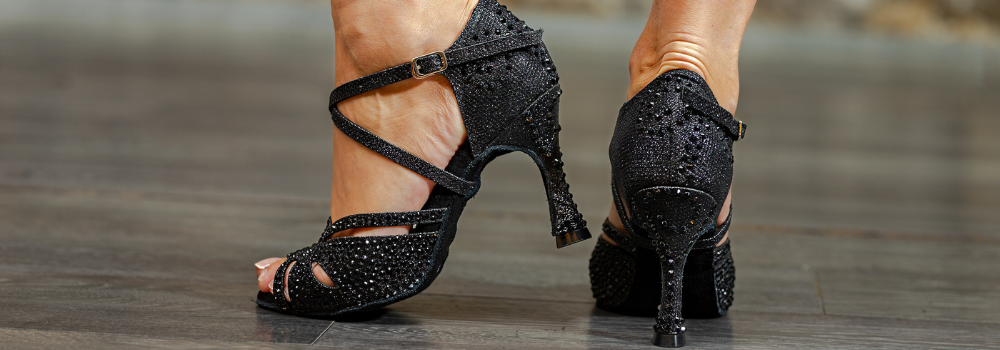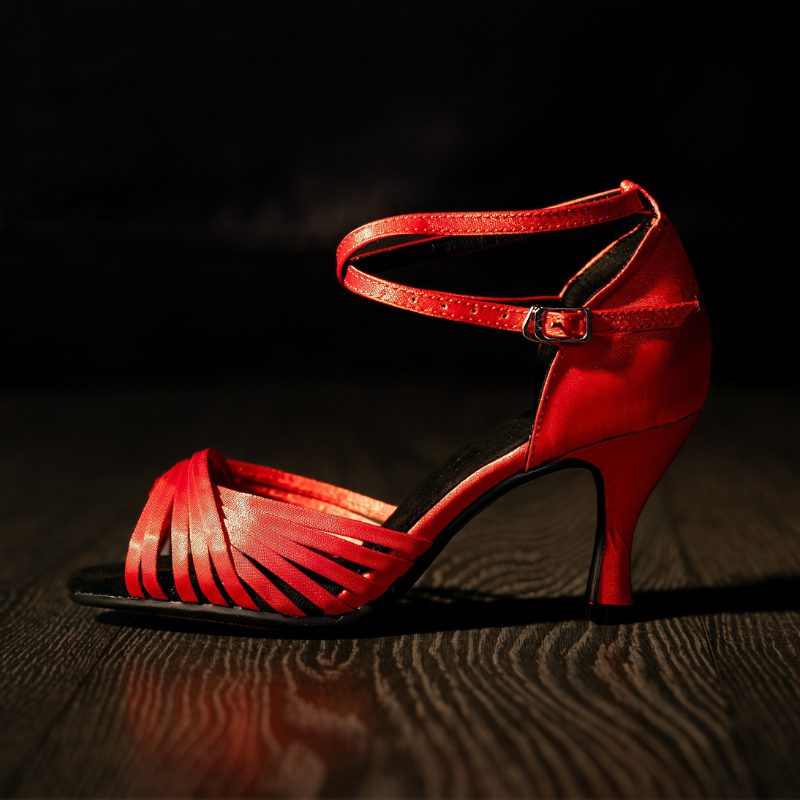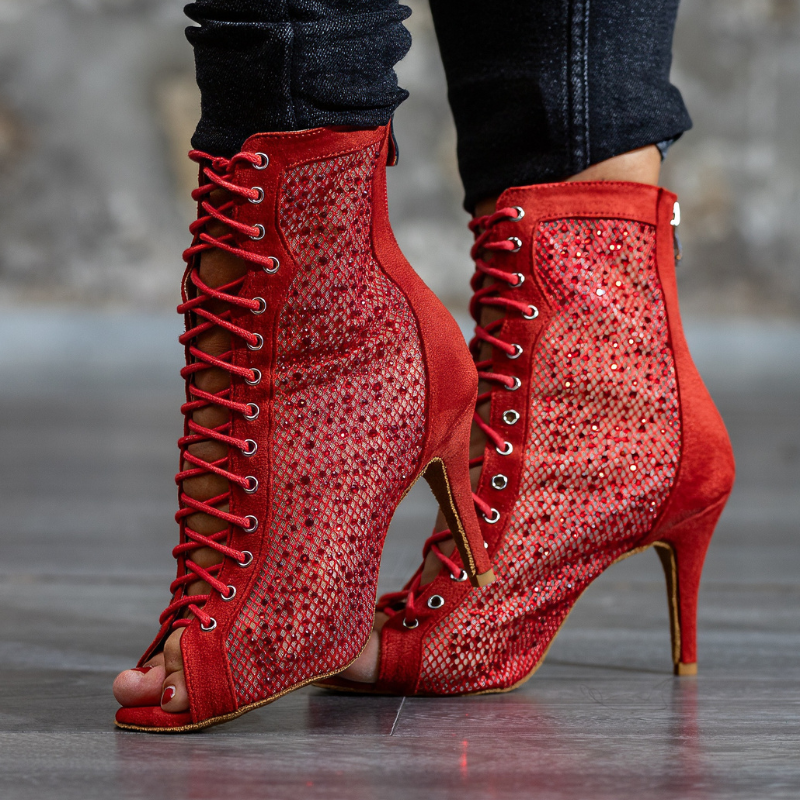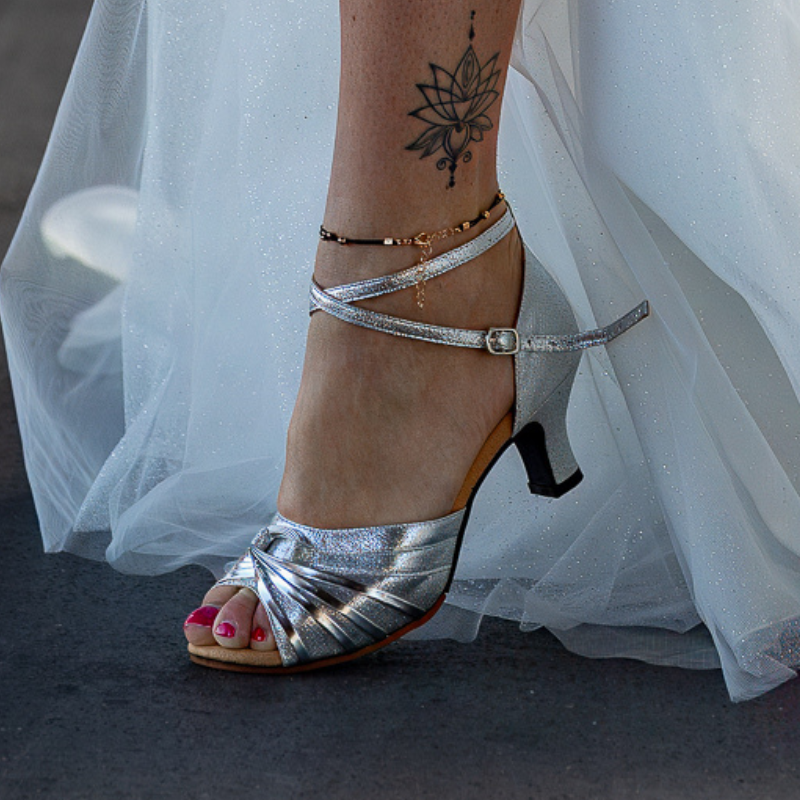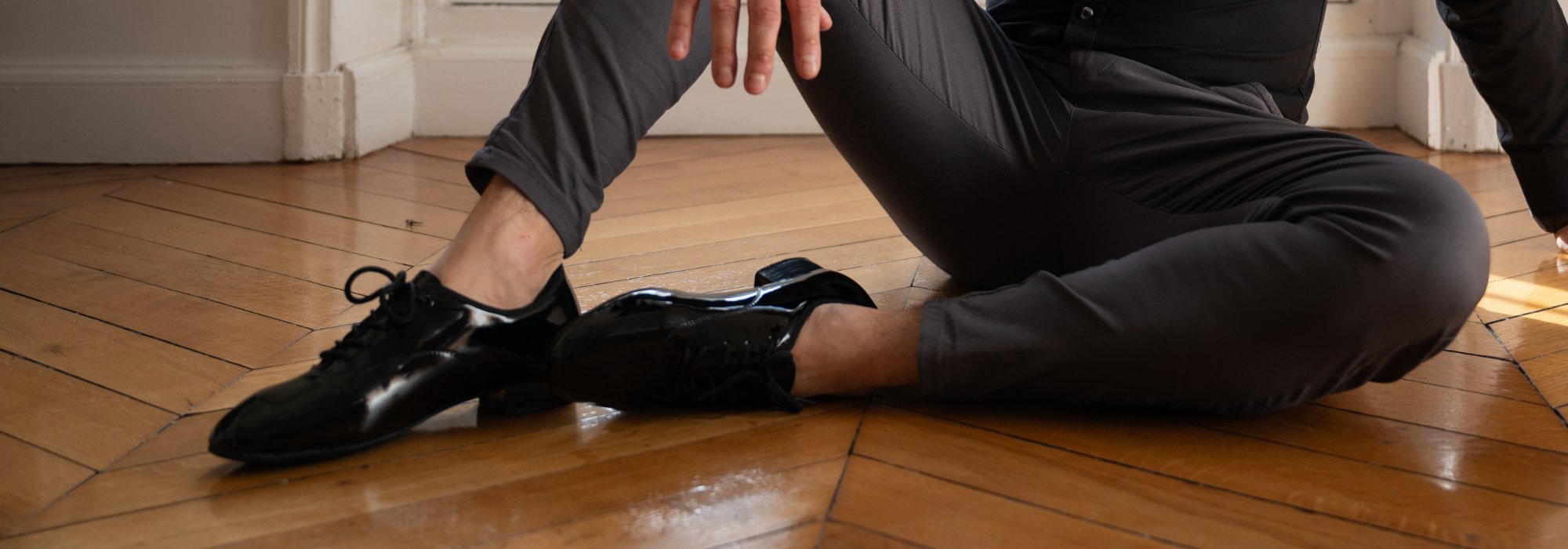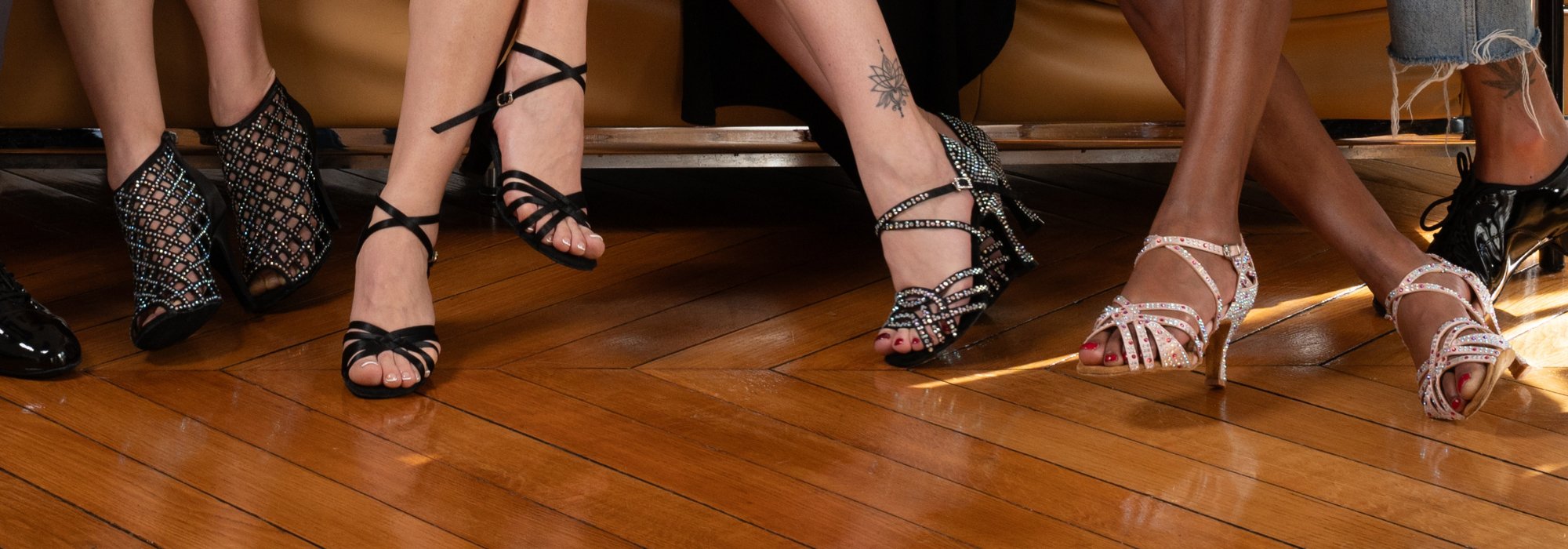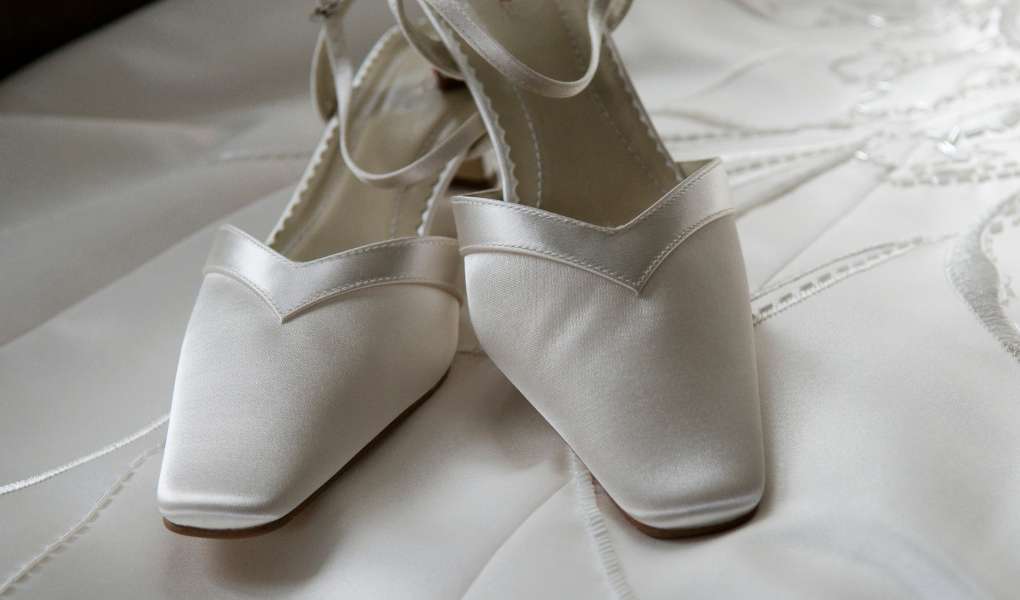How do I clean satin shoes?

Do you have satin shoes that have become soiled and you don't know how to clean them without damaging them? Are you looking for simple, effective solutions to restore their shine? This guide is for you!
Satin is a very popular material for special occasions. However, its delicacy requires special care, whether to remove stains, prevent damage or prolong its durability.
To clean your shoes, lightly dampen a microfiber cloth with cold water. Gently dab the surface of the shoes to remove dirt without rubbing. Caution: Never rub, as this may distort the delicate satin fabric.
In this guide, you will discover :
- What is satin and why is it so fragile?
- How to prepare your shoes for risk-free cleaning.
- The best techniques for treating simple or stubborn stains.
- Tips for preserving your shoes and preventing damage over time.
Ready to give your satin shoes a new lease on life? Let's get started!
What is satin?
Satin is a fabric with a seductive sheen, but it's also one of the most delicate to care for. Satin is made from silk, polyester or acetate. This delicate textile is woven to produce a smooth, reflective surface. This makes it ideal for formal or bridal shoes, but also vulnerable to wear and stains.
Satin characteristics
-
Luxurious shine: Thanks to its tight weave, satin reflects light, giving it its unique glossy appearance.
-
Soft to the touch: Satin's smooth surface makes it pleasant to handle and wear.
-
Specific weave: This weave is distinguished by its manufacturing method, which leaves a shiny side (front) and a matte side (back).
Why maintain it?
Caring for satin is all about prolonging its life and preserving its appearance.
To do so, you can :
-
Use suitable, non-abrasive products to prevent damage.
-
Handle with care to preserve the tight weave and avoid snags.
-
Prepare your shoes before any cleaning operation by removing dust or surface particles.

Prepare your shoes for cleaning
Before cleaning your satin shoes, it's essential to prepare them properly to avoid aggravating stains or damaging the delicate fabric. Careful preparationremoves surface dirt and minimizes the risks of subsequent steps.
Step 1: Gentle dusting
The first step is to remove any dust or dirt particles that may spread further into the fabric during cleaning.
Here are a few simple and effective tools:
-
Soft bristle brush: Perfect for removing surface dirt without damaging satin.
-
Clean cloth or nylon stocking: A ball-rolled stocking is ideal for capturing particles without creating scratches.
-
White eraser: For small spots or marks, rub gently with a clean eraser.
Step 2: Identify stain types
Examine your shoes carefully for stains and their nature:
-
Greasy stains: Oil and grease require specific products such as Marseille soap or diluted ammonia.diluted ammonia.
-
Light stains: Dust or traces of water can be treated with milder solutions such as sparkling water or a damp cloth.
-
Incrusted stains: These require stain removers adapted to fragile fabrics.
Step 3: Prepare tools and products
Before you start, gather everything you need to avoid interrupting the process:
-
Soft, clean cloths: prefer microfibres or cotton.
-
Gentle cleaning products: White vinegar, pH-neutral soap, clay stone or sodium bicarbonate.
-
Cold water bowl: Always use cold water to avoid discoloration or shrinkage.
-
Sponge or soft-bristle brush: For gentle application of cleaning solutions.
Step 4: Choose a suitable workspace
To protect your shoes during cleaning:
-
Set up in a clean, dry, preferably well-lit area.
-
Place a towel or cloth underneath to absorb any excess liquid.
-
Work in the direction of the satin fibers so as not to alter its shine.
By taking these precautions, you maximize your chances of successful cleaning while preserving the integrity and beauty of your satin shoes.
How to remove simple stains from satin?
Cleaning satin shoes requires delicacy and precision. Light stains can be removed using gentle techniques adapted to this fabric.
Follow these steps to restore your shoes to their original shine:
Method 1: White gum
White gum is ideal for removing superficial marks such as rubbing or streaks.
-
Step 1: Make sure the eraser is clean.
-
Step 2: Gently rub stained areas in the direction of the satin fibers.
-
Step 3: Regularly check that the eraser is not accumulating dirt that could scratch the fabric.
Method 2: Sparkling water
Sparkling water is effective for light stains.
-
Step 1: Soak a soft cloth in soda water.
-
Step 2: Gently dab the stain, without rubbing, to avoid penetrating the fibres.
-
Step 3: Let dry in the open air, away from any source of direct heat.
Method 3: Marseille soap
Marseille soap is a natural cleaner that can treat simple stains without damaging the fabric.
-
Step 1: Lightly dampen a clean sponge.
-
Step 2: Apply a little Marseille soap to the stain.
-
Step 3: Use gentle circular movements to remove dirt.
-
Step 4: Rinse with a clean damp cloth to remove soap residue.
Method 4: Damp cloth
For superficial marks, simply wipe with cold water.
-
Step 1: Soak a cloth in cold water and wring it out well.
-
Step 2: Dab the stained area, respecting the direction of the fibres.
-
Step 3: Pat dry immediately with a clean, dry cloth.
Warning: Can satin shoes get wet?
Satin shoes can get wet, but avoid excess moisture. Too much water can leave rings or damage the fabric.

Preserving and caring for your satin shoes
To guarantee the longevity and brilliance of your satin shoes, a preventive approach and careful maintenance are essential.
Here are a few practical tips to maximize their durability.
1. Protect your shoes before wearing them
-
Waterproofing: Apply a protective spray designed for delicate fabrics like satin. This will limit the risk of stains and dampness.
-
Reinforce sensitive areas: Protect heels or areas often exposed to knocks by applying a thin coat of transparent matte nail polish.
2. Handle with care
-
Avoid hostile environments: Don't wear your satin shoes in conditions where they are likely to get dirty or damaged (rain, mud, rough floors).
-
Clean immediately after use: Use a soft brush or clean cloth to remove dust or small dirt particles before they become embedded.
3. Adopt appropriate storage
-
Maintain their shape: Use tissue paper or shoe trees to maintain the structure of your shoes, especially if they are stored for a long time.
-
Sheltered storage: Keep your shoes in their box or a fabric cover, in a dry place and away from direct sunlight to prevent discoloration and mildew.
4. Call in the experts if necessary
-
Complex stain removal: In the event of stubborn stains or heavy wear, entrust your shoes to a shoemaker who specializes in delicate materials to avoid aggravating the damage.
-
Color restoration: If satin fades, a professional dye can restore your shoes to their original shine.
5. Minimize wear
-
Alternate your shoes: Limit wear and tear by not wearing your satin shoes continuously.
- Pack an emergency kit: Include a white eraser, a soft cloth and a mini waterproofing spray to deal with minor accidents on the fly.

Discover SalsaNueva's satin shoes!
We've come to the end of this guide. You now know how to clean satin shoes without damaging them. In fact, you now know how to prepare your shoes, treat stains and care for them so that they retain their shine and beauty over the long term.
Thanks to these simple, effective techniques, you can extend the life of your shoes and keep them in good condition for all those special occasions.
→ If you're looking for satin shoes Discover our exclusive collection at SalsaNueva. Our models combine refinement and durability to meet all your needs.
